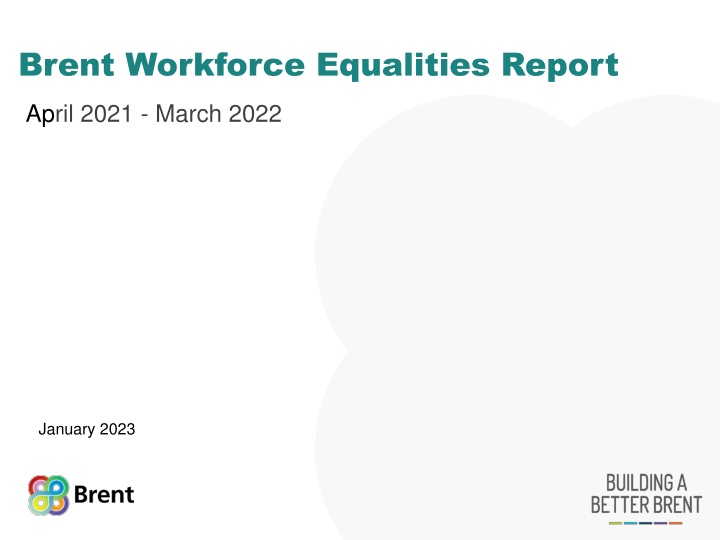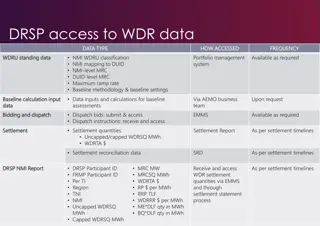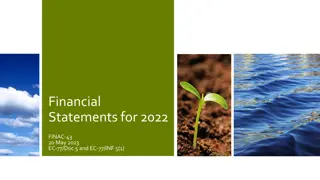
Brent Council Workforce Equalities Report April 2021 - March 2022 & January 2023
"Explore Brent Council's annual workforce equalities report, focusing on diversity, inclusion, and workforce profiles. Learn about their efforts to remove inequality and promote diversity in Brent. Contact Human Resources for more information."
Download Presentation

Please find below an Image/Link to download the presentation.
The content on the website is provided AS IS for your information and personal use only. It may not be sold, licensed, or shared on other websites without obtaining consent from the author. If you encounter any issues during the download, it is possible that the publisher has removed the file from their server.
You are allowed to download the files provided on this website for personal or commercial use, subject to the condition that they are used lawfully. All files are the property of their respective owners.
The content on the website is provided AS IS for your information and personal use only. It may not be sold, licensed, or shared on other websites without obtaining consent from the author.
E N D
Presentation Transcript
Brent Workforce Equalities Report April 2021 - March 2022 January 2023
Contents Contents Pg Contents (continued) .Pg Ethnicity and recruitment Gender profile: workforce and London Gender, grade and work patterns Gender and promotion Religion: workforce and population Sexual orientation and gender identity Caring responsibilities Brent s key achievements since 2021 Priority actions for 2022/23 Appendix Data quality Introduction About the data Definition of terms Headlines Workforce profile: trends Workforce profile: how Brent compares Age profile of Brent workforce Age and pay grade Disability and age Disability and pay grade Disability and promotion Ethnic profile: workforce and population Ethnic profile: workforce and London Ethnicity and pay grade Ethnicity and promotion 3 4 5 6 7 8 9 18 19 20 21 22 23 24 25 26 27 10 11 12 13 14 15 16 17 2
Introduction This is Brent Council s annual workforce equalities report for the period April 2021 to March 2022. Equality and diversity remain integral to Brent s vision to remove inequality and be a better Brent. We strive to continue to be a fully accessible and inclusive organisation, to encourage the broad spectrum of skills, experiences and perspectives represented in our communities and our workforce. To achieve our vision, the council requires a high performing workforce that provides the best services it can which meet the needs of all our diverse local communities. The council aims to recruit, retain and reward a diverse, highly skilled, flexible and motivated workforce that leads the way in encouraging diversity to flourish in Brent. This report provides an overview of the diversity profile of the council s workforce, broken down by the equality characteristics of age, disability, gender, race, religion or belief, sexual orientation and gender identity and how this compares with the population of Brent and/ or other London boroughs. It also includes information on caring and parenting responsibilities. The data in this report helps inform the council s workforce planning and decision-making processes. The report also informs the development of workforce initiatives to further improve the representation of minority groups within the Council, remove potential barriers to progression and ensure more inclusive processes. Please contact Human Resources at staffdevelopment@brent.gov.uk if you have any questions or require further information. 3
About the data Data sources: Workforce data is sourced from the Council s HR system for the period April 2021 to March 2022. Benchmarking data has been drawn from a range of sources including: the Human Capital Metrics Survey 2021-22, the Office for National Statistics, the Greater London Authority and the Government Equalities Office. Who the report includes: This report relates to staff employed by Brent, excluding schools. It excludes contracted out services which are monitored elsewhere. The total number of staff employed as at 31st March 2022 was 2,449. Equality data: Employees can choose whether or not to provide information on their equality characteristics, except for certain information which is essential for payroll processing and pension scheme administration purposes (eg age and gender). The data that follows is based on the number of employees who have chosen to provide equalities information. Appendix 1 provides information about the percentage of staff who provided equality information. Percentages, counts and rounding: Most figures are expressed as percentages and base counts (the number of employees that a chart is based on) are also provided for reference. For the most part. percentages have been rounded to the nearest percentage point this means that figures presented on charts may not always sum exactly to 100% or to other totals presented. Confidentiality: Information has not been published where it may lead to the identification of an individual. 4
Definitions of terms used in report Term Definition/question BAME Employees from Black, Asian and Minority Ethnic group backgrounds. LGB Lesbian, gay and bisexual Transgender Transgender/non-binary employees and those whose gender identity was not the same as that assigned at birth Disability Employees who consider themselves to have a disability / long term impairment Caring responsibilities Employees with caring responsibilities for dependents, except parents Parenting responsibilities Employees with dependent children who are aged 18 or under Promotions Employees who have moved up one or more pay grades in the last 12 months 5
Headlines Age: The Council s workforce has an older age profile compared with the local population: over half the workforce are aged 41-60 (54%), while this age group comprises just 38% of the working age population. The average age of the workforce is 45, slightly younger than the average for London boroughs (47). Disability: 9% of Brent employees have a disability compared with 15% of the working age population. Brent has a higher proportion of disabled employees compared with the London borough average of 5%. Disabled staff comprised 7% of those promoted and 11% of employees at the highest pay grades (HAY). Ethnicity: Two thirds (67%) of employees are from Black, Asian and minority ethnic (BAME) groups the highest rate across all London Boroughs, and higher than the percentage of BAME residents in the Brent working age population (62%). BAME employees make up over two thirds (71%) of those promoted over the year but remain less well represented at the highest HAY pay grades (37%). Gender: Around two-thirds of the workforce are women, well above the proportion of women in the population (51%). Women comprised 62% of those promoted over the year but remain less well represented at the highest pay grades, comprising 47% of staff on HAY grades. Religion: Almost half of staff are Christian, higher than the proportion in the population (49% vs. 44%). Muslim employees are not as well represented, comprising 11% of the workforce compared to 18% of the working age population. Hindu employees make up 16% of the workforce and 20% of the working age population. Sexual orientation/gender identity: around 4% of employees are LGB and 1% identify as transgender. Caring responsibilities: 14% of staff have caring responsibilities and 40% have parenting responsibilities. 6 Note: London Borough averages relate to the median score across council workforces.
Workforce profile: trends Brent workforce by equality group, 2018-2022 2018 2019 2020 2021 2022 Trend Comment The workforce comprised 2,449 employees in March 2022, up 3% on 2021. Total employees 2,119 2,138 2,365 2,371 2,449 Average age The average age of the workforce is 45 - same as last year. 44 44 44 45 45 9% of staff have a disability - in line with previous years. Disability 10% 9% 9% 8% 9% Two-thirds of staff are from BAME groups - similar to previous years. BAME 66% 65% 67% 66% 67% Almost two thirds of staff are female - same as last year Female 64% 64% 64% 63% 63% The percentage of staff identified as LGB remains at 4%. LGB 3% 3% 4% 4% 4% Source: Brent Council workforce data, 2018-2022 (as at 31 March each year). 7
Workforce profile: how Brent compares Workforce profile: Brent vs. London councils workforce, March 2022 London councils average (median) Brent ranking (out of 25 areas)* Brent Average age 3rd youngest in London 45 47 Disability 5th highest in London 9% 5% BAME 1st - highest in London 67% 43% Female 9th highest in London 63% 61% (*) London ranking provides Brent's position out of 25 council areas in London (where benchmarking data were available) 8 Sources: Human Capital Metrics Survey 2021/22.
Age profile: Brent workforce The council has an older workforce when compared with the Brent working age population. Over half the workforce are aged 41-60 (54%), while this age group comprises just 38% of the working age population. Conversely, those aged 18-30 make up 15% of employees compared with 29% of the working age population. Age profile: Brent workforce compared with working age population Relative to other London Boroughs, the Brent workforce is slightly younger: the average age of a Brent employee is 45, compared with 47 across London Boroughs. 9 Source: Office for National Statistics, 2021 Census. Notes: (*) The Brent workforce figure for 61 and over includes a small number of employees aged over 66.
Age and grade Employees at higher paid grades (HAY) have an older age profile compared with other employees: almost half are aged over 50 (47% vs. 38% of staff in all grades). 10 Source: Brent workforce data - based on 2,449 employees (100% employees).
Disability and age Around 9% of Brent employees have a disability. This compares with 5% across London Brent has the 5th highest percentage across London Boroughs. However, disabled people are less well represented in the workforce when compared to their representation in the working age population in Brent (9% vs. 15%). The percentage of employees who have a disability increases with age: the proportion of those aged over 60 with a disability was double the proportion of employees in the groups aged 40 and under (14% vs. 7%). Disability and age Brent workforce, March 2022 Percentage who have a disability Measures compared Sources: Workforce data based on 1,674 employees who provided disability information (68% employees); Comparator data from ONS, 2019-21 Annual Population Survey (3 year average) and Human Capital Metrics Survey 2021/22. 11
Disability and grade The percentage of employees who have a disability is highest among HAY grade staff and lowest for the PO5-PO8 level (11% and 6%). Around 9.5% of the top (5%) of earners in the Council have a disability higher than the average for London boroughs (6.0%). Source: Workforce data based on 1,674 employees who provided disability information (68% employees); Top 5% earners data from Human Capital Metrics Survey 2021/22 (London average is median across boroughs). 12
Disability and promotion Disabled employees made up 7% of those promoted over the year, lower than their representation in the workforce (9%). 13 Source: Workforce data based on 1,674 employees who provided disability data and 269 employees promotions over the year.
Ethnicity profile: workforce and population Two thirds (67%) of employees are from a Black, Asian and minority ethnic (BAME) background compared with 62% of the Brent working age population, and 64% of Brent s population as a whole. There is a higher proportion of Black employees and White British employees in the workforce relative to their representation in the population, while those from Asian, White (Other groups) and Mixed & Other ethnic groups are less well represented. Source: Workforce data based on 1,809 employees who provided ethnicity information (74% employees); Comparator data from: GLA, Ethnic Group Population Projections for 2021 (2016-based, housing led). 14
Ethnicity profile: workforce and London Brent has a far more diverse workforce compared with other London Boroughs: two thirds (67%) of Brent employees are from Black, Asian and minority ethnic (BAME) groups compared with 40% across London. Brent Council has the highest percentage of BAME employees of any London Borough. Source: Workforce data based on 1,809 employees who provided ethnicity information (74% employees); Comparator data from Human Capital Metrics Survey 2021/22. 15
Ethnicity and grade BAME employees are less well represented at higher grades (37% and 57%) compared with 75% of those in the lowest grade group. Brent has a higher percentage of top earners (5%) from BAME groups compared with the London average - 38% vs. 23%. Source: Workforce data based on 1,809 employees who provided ethnicity information (74% employees); Comparator data from Human Capital Metrics Survey 2021/22. 16
Ethnicity and promotion BAME employees make up 67% of staff and 71% of those promoted over the year. Overall, the ethnic breakdown of those promoted is broadly similar to the ethnic breakdown of the workforce. Source: Workforce data based on 1,809 employees who provided ethnicity information (74% staff) and 299 employees promotions over the year 17
Ethnicity and recruitment: senior grades Source: Recruitment data, 1 Oct 2021 - 31 Mar 22. Percentages are based on smaller numbers due to data availability (HAY: 191 applicants; PO5-8: 262 applicants) 18
Gender profile: workforce and London Almost two thirds (63%) of the workforce are women which is broadly in line with the average for London Boroughs (61%). The proportion of women in the workforce remains well above the proportion of women in the Brent working age population. Sources: Workforce data based on 2,449 employees; comparator data from the Human Capital Metrics Survey 2021/22 and Office for National Statistics (2021 Census). 19
Gender, grade and work pattern Women remain less well represented at the highest pay grade level, comprising less than half of the employees at that grade (47%). A similar proportion (50%) of the top 5% of earners in the workforce are women same as the proportion across London (50%). The majority of part-time employees are women (85%). 20 Sources: Workforce data based on 2,449 employees; comparator data from the Human Capital Metrics Survey 2021/22.
Gender and promotion The gender profile of employees promoted is broadly similar to the gender profile of the council workforce: women make up 63% of the workforce and 62% of those promoted. 21 Source: Workforce data based on 2,449 employees and 353 employees promotions over the year.
Religion workforce and population Around half the workforce are Christian a little higher than the proportion in the Brent population. The proportion of Muslim employees is 11%, lower than the proportion of Muslim residents in the working age population (18%). Hindu employees make up 16% of the workforce, lower than their representation in the population (20%). Source: Workforce data based on 1,586 employees who provided faith information (65% employees); Comparator data from Office for National Statistics, 2011 Census data (figures exclude those who did not state their religion on the Census). 22
Sexual orientation and gender identity Sexual orientation 3.7% of Brent employees identified as LGB or Other . Benchmarking statistics about the size of the LGB population vary considerably and there is no single widely accepted measure. For example, the 2020 GP Patient Survey found that 7% of Brent residents surveyed identified as LGB/Other, while 2018 survey data from the Office for National Statistics provides lower estimates for both London and England (3.7% and 2.9%). Gender identity 1.2% of employees identified as transgender. The Government Equalities Office tentatively estimates that around 0.3-0.8% of the UK population are transgender. Future estimates The 2021 Census was the first census to ask questions about both sexual orientation and gender identity this will provide better benchmarking data. These figures were not available at the time of writing, but are expected in early 2023. Sources: Workforce data based on 1,604 employees data on sexual orientation (65% of employees), and 1,717 (70% of employees) on gender identity; Government Equality Office (Trans people in the UK, factsheet 2018);ONS, Sexual orientation, UK, 2018; NHS England, GP Patient Survey 2020. 23
Caring and parenting responsibilities Around one in seven (14%) staff had caring responsibilities and four in ten (40%) staff had parenting responsibilities. Notes: Based on 1,617 employees with caring responsibilities and 1,548 with parenting responsibilities, 66% and 63% of employees respectively. 24
Brents Key Achievements since 2021 We have started to use the data from our new HR system to analyse recruitment data at key stages of the recruitment process. Further support from all our networks in bringing relevant issues to the forefront. For example, we saw the support of our Staff Disabilities Network in furthering awareness of health issues such as mental health and invisible disabilities through well-attended lived experience workshops and communications throughout the year; and Black History Month was marked by raising awareness of prevalent health issues in collaboration with the Disabilities and Gender networks. We have provided more equality, diversity and inclusion training for our employees in customer facing services. For example, through our LGBTQ+ staff network we have furthered LGBTQ+ awareness through various lunchtime sessions, also attended by Members, which has led to workshops being commissioned in our Adult Social Care and other customer- facing environments. We have continued to provide an inclusive Middle Managers Development Programme, with 5 cohorts of management having completed the programme and a further cohort starting in Spring 2023. Of the 5 cohorts, 53% were female and 49% were BAME. We have continued to provide inclusive apprenticeships. Of all our apprenticeships, including apprentices from our workforce and from the community in 2021/22, 51% have been female, 77% have been from a BAME background and 12% have had a disability. For our participation in the National Graduate Development Programme and with the support of the Youth Advisory group, we have applied a localised, targeted approach to recruitment to achieve a larger, diverse pool of candidates. In our most recent recruitment round, 86% of local applicants were from a BAME background and of the local cohort of graduates recruited, 100% were BAME. Recognition of the Council s work as best practice through invitation to a conference for inclusive practice for London Councils. 25
Priority Actions for 2022/23 Review the work of the Equality Strategy Action Plan and work on creating a new Action Plan under the renewed strategy for another term and a continued focus on diversity and inclusion initiatives. Adopt the London Council Race Equality Statement and Framework in promoting equality, diversity and inclusion (EDI) best practice in the workforce. To capture and analyse data across a broader range of indicators to monitor the application of policies and other activities. For example, in relation to the make-up of staff who are managed under the council s disciplinary policy. To adopt a more intersectional approach to all EDI in line with the Equality Strategy, through the staff networks and the corporate learning offer in order to encourage more inclusive working and progression, and to raise awareness of and celebrate diversity. To increase access to corporate communication and inclusive learning for all non-desk and/ or field- based remote working employees via a mobile device app. To work with local communities who are less well represented in the workforce to raise awareness of and increase applications for roles within the council. 26
Appendix 1: Data quality The chart below shows the percentage of Brent staff who provided equalities data across the different equality strands from 2018 to 2022. 27


















